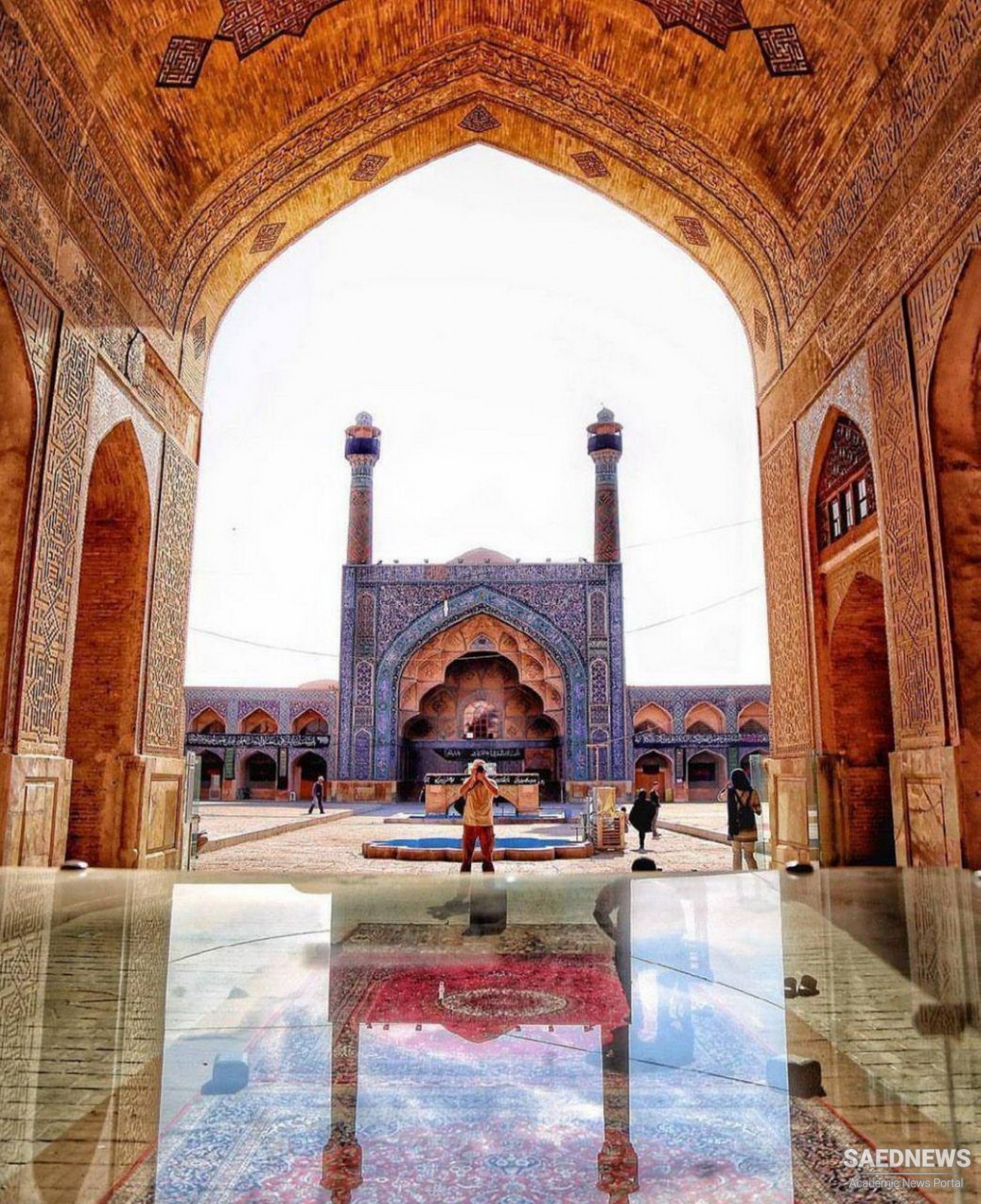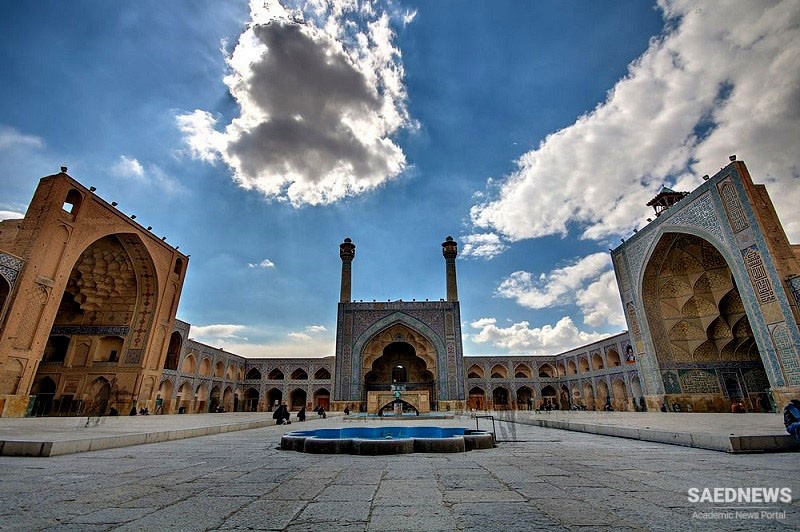The Great Mosque of Isfahan, also known as Jameh Mosque or Friday Mosque, also began its life as a hypostyle mosque in the 8th century. This design defined early Islamic architecture, until the four-iwan style was introduced in the 11th century, drawn from ancient Persian ayvan design.
You can still see the hypostyle area in the Friday Mosque, but the mosque itself was converted into the four-iwan style by the Great Seljuqs in the 11th century. The Great Seljuqs was the main branch of a Turkic dynasty that ruled over Iran, Iraq, and much of Anatolia.
Seen in the photo above is the iwan of the Friday Mosque facing Mecca, the qibla iwan, which in mosques built in this style is often the largest and most ornately decorated vaulted opening. (Qibla is the orientation towards Mecca.) In the Friday Mosque, the qibla iwan is also flanked by minarets, the towers from which the call to prayer is announced.

Two rival Seljuq viziers of Sultan Malik Shah (reigned 1072–92) added two domed chambers. The first dome, located south of the mosque, was constructed over the mihrab of the original hypostyle mosque by the vizier Nizam al-Mulk around 1087. The mihrab is the semicircular niche often gilded or ornately decorated located in the qibla wall, the wall facing Mecca and where worshippers should face when praying. This dome was larger than any known dome in the Islamic world at the time.
While Nizam al-Mulk’s dome was impressive due to its size, the smaller, northern dome constructed by his rival a year later was impressive due to its interlocking geometric patterns. Taj al-Mulk commissioned the domed chamber around 1088, functioning, according to Babaie, as a space where the sultan would stop upon entering the north gate. This second domed chamber, locally known as Gunbad Khaki (“earthen dome”), ended up being the more famous part of the mosque due to its design, and is regarded as a masterpiece of Seljuq brickwork engineering.


 Jamkaran Mosque at Qom
Jamkaran Mosque at Qom














































